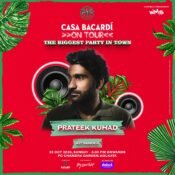
The Evolution of Durga Puja: How Kolkata’s Biggest Festival Has Transformed Over the Years
Durga Puja, often called the soul of Kolkata, is more than just a religious festival; it is a cultural phenomenon that brings together art, music, food, and tradition. Over the years, this iconic celebration has undergone remarkable transformations, reflecting the changing times while staying deeply rooted in Bengali culture. Let’s take a journey through the evolution of this grand event.
The Origins: A Celebration of Devotion
Durga Puja’s history in Bengal dates back to the late 16th century when it was primarily a household affair among zamindars (landowners). Wealthy families hosted elaborate rituals to honor the goddess, symbolizing their devotion and affluence. The Puja was a private event, attended by close family and friends, with simple yet traditional decorations.
The Transition to a Community Festival
By the early 20th century, Durga Puja began transitioning into a community-centric celebration. The first public or “Baroari” Puja was organized in 1790 by 12 friends in Hooghly. This marked the beginning of Sarbojanin (community) Durga Puja, which allowed people from all walks of life to participate.
During the Bengal Renaissance, intellectuals like Rabindranath Tagore and Subhas Chandra Bose added a cultural and nationalist dimension to the festival. Durga Puja became a platform for uniting Bengalis, fostering social cohesion, and even subtly promoting the freedom struggle against British rule.
The Artistic Revolution: Pandal Themes and Idol Innovations
In the post-independence era, Kolkata’s Durga Puja transformed into a canvas for artistic expression. The 1980s saw the rise of theme-based pandals, where organizers began experimenting with creative ideas, turning the festival into a showcase of art and culture.
From recreating iconic monuments to addressing social issues like climate change and gender equality, pandals now serve as immersive storytelling experiences. The idols, too, have evolved. Traditional clay idols have been complemented by eco-friendly alternatives, intricate designs, and even avant-garde interpretations of Goddess Durga.
The Economic Boom: A Celebration Beyond Religion
Durga Puja is no longer just a religious event; it is an economic powerhouse. From the fashion industry booming with festive sales to the tourism surge during Puja days, the festival fuels Kolkata’s economy. Corporate sponsorships and media collaborations have also elevated the scale of celebrations.
The grandeur of competitions among Puja committees has resulted in jaw-dropping displays, with some pandals even using international materials and techniques. Awards like the “Sharad Samman” further motivate organizers to push creative boundaries.
The Digital Era: Virtual Pandals and Global Reach
The pandemic brought unexpected changes to Durga Puja celebrations, ushering in a digital era. Virtual tours of pandals, live-streamed rituals, and online cultural programs ensured that the spirit of the festival remained alive even during lockdowns.
Now, with technology becoming an integral part of the festivities, people across the globe can participate in Kolkata’s Durga Puja, making it a truly global celebration.
What Lies Ahead? A Blend of Tradition and Innovation
As we look to the future, Durga Puja is poised to balance tradition with modernity. While technological innovations and global influences continue to shape the festival, its essence—celebrating the victory of good over evil—remains unchanged.
From the private courtyards of zamindars to the vibrant streets of Kolkata, Durga Puja’s journey is a testament to the resilience and adaptability of Bengali culture. It’s a festival that evolves with time while holding on to its roots, a celebration that is as timeless as the city it calls home.
Kolkata Buzz invites you to share your favorite Durga Puja memories and stories in the comments below. Let’s celebrate the festival that defines our city!



